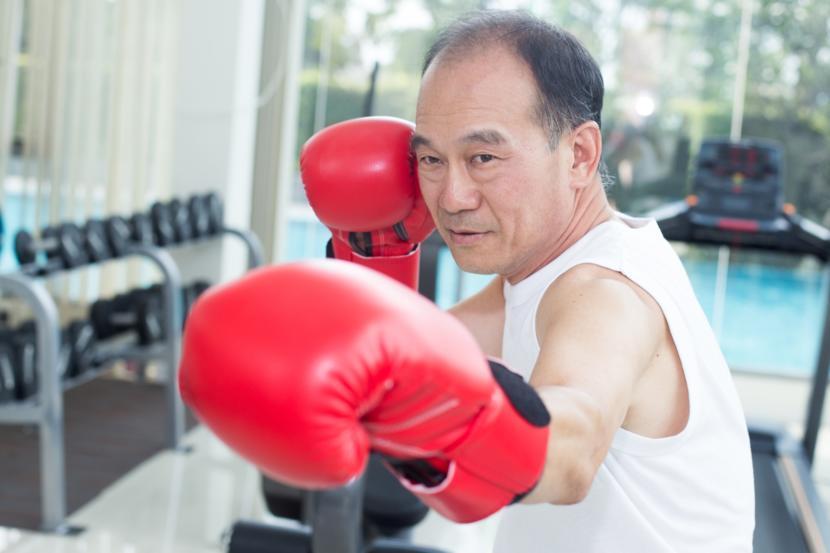It’s Time to Fight Parkinson’s Disease Through Exercise, Says South Carolina Gym

Going to the gym regularly can significantly help to combat Parkinson’s disease. According to Cody Cooper from Grit Box Fitness, Parkinson’s progression can be delayed due to the forced intense exercise. Not only that, but it also helps a lot with the enhancing strength and stability.
What is Parkinson’s disease exactly?
There are some commonly known things about Parkinson’s disease (PD), such as the tremor and mobility problems that most patients experience, but other than that, most people know nothing. Having said that, here are more things most people don't know about this condition:
- It has been documented that Parkinson’s disease is considered as a progressive and chronic disorder. Meaning to say, its symptoms will continue and may worsen when not treated. Roughly one million individuals in the United States suffer from Parkinson’s disease. Up to date, its cause is still unknown.
- This condition mainly involves the death (sometimes malfunctioning) of important nerve cells within the brain known as neurons. Basically, it greatly impacts neurons in the substantia nigra, an area in your brain.
- Signs that you have Parkinson’s disease include slowness of movement, tremor of legs, hands, arms, and face, impaired coordination and balance, as well as stiffness of the trunk and limbs.
- Every nine minutes, somebody is identified or diagnosed with Parkinson’s disease.
- While most people are diagnosed with PD at age 60, about 15% are diagnosed under the age of 50.
Diagnosis of the disease
When it comes to diagnosis, people get their result from their medical history, laboratory tests, physical examination, family history, and X-rays. Patients must not wait for too long before they decide to take action. The perfect time to solve the problem is after learning about the diagnosis.
You surely want several options for the treatment. The first person to approach is the PD specialist who has credentials on giving valuable suggestions and a cure for what you currently feel. Furthermore, this specialist knows how to evaluate the applicable therapies or medications you must undergo. Aside from seeking the help of a professional doctor, patients must be aware of the importance of self-management.
When extreme pain attacks, he/she must be able to do something to ease the discomfort. It is not applicable to just cry at the corner. You must invest in enough exercise and rest. This can save you from paying expensive bills in the future.
Exercise as a treatment
At this moment, there’s no known treatment to cease or delay the progression of this condition. Instead, physical therapy is tailored to cure the symptoms, which are bothersome to the patients. Other than that, no treatment has been made for Parkinson’s disease. However, there are certain approaches which significantly help patients who suffer from Parkinson’s disease such as:
- Dietary considerations
- Speech therapy
- Physical therapy
- General lifestyle modifications
- Surgical therapy
- And exercise
Exercise plays a significant role in maintaining a healthy lifestyle. For those who suffer from Parkinson’s disease, it’s more than that. It serves as their way to maintain mobility, balance, and capability to do their daily routine. As a matter of fact, the study from the Parkinson’s Outcomes Project proves that individuals with this condition who just exercise at least 2.5 hours every week experience a slow decline in life. So, building an early exercise routine is an important part of your disease management. Cody Cooper, the man in-charge of Rock Steady Boxing program from Grit Box Fitness understands that. It’s the reason behind why they have launched the program to fight this disease through boxing and tennis.
What are the recommended exercises to manage Parkinson’s disease?
Aside from going to the gym, people with Parkinson’s disease may also practice these expert-approved exercises:
Aerobic exercise
Aerobic exercises are recommended to strengthen and support the heart and lungs. The different factors that could affect in aerobic exercises are the intensity of the heart rate, how frequent the aerobic activity is performed, and the length of time consumed for every session. During the exercise, it is important to determine the body’s maximum heart rate to determine how strong the heart is relative to a person’s age.
With aerobic exercises, you can delay the progression of Parkinson’s disease. As per J. Eric Ahlskog, Ph.D., a well-known neurologist, this exercise improves the factors that may have a protective impact on your brain. Considering the intensity level of an exercise, there are three levels: the low, medium, and high intensity. Low-intensity exercises may include simple walking, housework, gardening, and car washing. Some individuals may prefer a more dynamic and energetic exercise, and they begin at the medium level. These include the exercises involving the chest, buttocks, legs, and the back. It includes activities such as bicycling, dancing, hiking, sports involvement, and brisk walking. Beginners are not usually allowed to be engaged in high-intensity exercises but are suggested for persons who already conduct their exercise daily. This includes actions such as running, jumping rope, and spinning.
Yoga
Yoga is a term derived from the Sanskrit word “Yuj,” which means to integrate or to unite. It is a 5,000-year-old body of knowledge that first started in India. It is all about the harmonization of the mind, along with the mind and breathing by means of a wide variety of breathing techniques, meditations, and yoga poses. The art of yoga is considered to be a holistic approach to life, which integrates all the necessary elements of its ancient knowledge in order to make a discipline by uniting the mind, the body, as well as the soul. Aside from a series of simple but effective breathing techniques and yoga postures, placing a greater emphasis right on the inner experience of the mind’s well-being, the meditation and other important hidden elements in the human existence are also necessary. When a person is in harmony, his or her journey through life becomes happier, calmer, and more fulfilled.
Tai Chi
Although Tai Chi is a gentle workout that doesn’t leave you breathless, it can give the key components of fitness such as flexibility, muscle strength, balance, and aerobic conditioning. It also appears that practicing Tai Chi is helpful in the treatment of several medical illnesses such as low bone density, arthritis, breast cancer, heart failure and heart disease, hypertension, sleeping problems, Parkinson’s disease and stroke.
An hour of doing Tai Chi twice a week for 12 consecutive weeks can reduce arthritis pain and improve the mood and the physical functions of the body that is more than the standard of stretching exercises. Tai Chi is safe and an effective way in maintaining the density of the bone in premenopausal women. 16 weeks of practicing Tai Chi meditation can also improve the quality of the sleep duration for a person which is also significant. For those who are diagnosed with Parkinson's, Tai Chi can improve their standing balance, which is more than what a general exercise program can give that entails stretching, breathing, mobilizing the muscles, as well as the joints that involve in walking and sitting. Before starting any exercise program, make sure to first consult your general practitioner or neurologist. They may need to consider your treatment plan, your current symptoms, and your personal history which may impact your ability to exercise.















